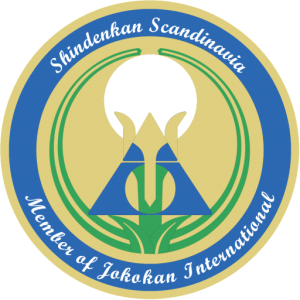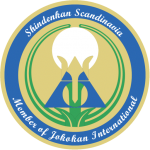By Jokokan Federation
Our experiences and results
Jokokan has now officially consolidated its experiences and dispositions over the last 9 months after the turn of the year 2003/2004 marked the end of the Jokokan association's long and hard cultural and organizational change process, where the transformation from a less highly elitist organization to a democratic federation where there is room for everyone – the elite as well as the exerciser, officially ended.
Like all cultural and organizational change processes, this has required hard work, management, overview and adjustments with timely care, cooperation and consultations at all levels of the organization, and not least communication, communication and more communication.
It has definitely not been easy and we have had to fight for a long time uphill, - it was a long tough move, but we succeeded and we were successful.
Management of association work can only use a value-based form of management with the example as an ice breaker and inspiration, since all the contributors are volunteers who work unpaid to make a difference for other people, in different time periods, with different efforts and delivered quality.
Our experience - along with countless other associations and voluntary organizations - is that association work must not demand too much, too long or too constantly, as this will conflict with the contributor's other interests and obligations.
In Jokokan's case there were consistently two constant and supporting forces.
There were therefore very large limitations and uncertainties in the work of carrying out such a radical cultural and organizational change process as the Jokokan has just carried out.
It has definitely been a challenge in terms of management, since Jokokan, as already pointed out, is not a company with paid labor and carefully selected managers for all key positions.
But it worked! We have survived as an organisation, which was the main goal of our first joint strategic plan 2001-2006, and we have even reached all the set sub-goals two years ahead of time - and more.
This success has resulted in a new joint strategic plan 2004-2010, which was unanimously adopted at the general meeting in May, 2004.
What have we achieved?
In the process, we have grown 650 % through an explosive growth in terms of membership to expect around 300 members at the turn of the year. We have gained international recognition, achieving 20,000 monthly readers from all over the world on our website. We have prepared our organizational structure and are geared for anything from 300 to 3,000 members, but most importantly – we have survived!
The new generations of members, their effort and dedication, will show where the future Jokokan ends up.
The communication opener – The ice breaker with room for everyone
We have adapted our requirements and way of communication to the demands and needs of the market, and were still able to preserve our character, set of values and teaching principles through division into three overlapping main systems with increasing natural and holistic requirements – external (Omote) and internal (Ura).
The targeting of the main stage 1 system; Yakami-ryu Karate-do, including Yakami-ryu Gensei Karate-do, against all generations and genders, has been received extremely well in Denmark. With 99 % of all members currently training in this main system, there truly is "room for everyone".
This with proactive and direct support and preparation through the association's and Honbu-dojo's prepared concepts, structures and procedures, with timely care and timing.
This has made room for more members, as well as the instructors' options for marking and unfolding under the new conditions and requirements.
Main stage 1 system; Yakami-ryu Karate-do, including Yakami-ryu Gensei Karate-do, as the first step on the Yakami-ryu ladder, is based on mutual respect and acceptance member to member, members to instructor, and instructor to members.
Of course, this also applies in terms of management and between members.
The vast majority of Jokokan members are fully satisfied with the first Yakami-ryu step, and will stick to this. But the subsequent Yakami-ryu steps also give the experienced Jokokan members from 4-5.dan the opportunity to further develop their skills and insight with increasing natural and holistic requirements - external (Omote) and internal (Ura).
Increasing demands, however, also mean a greatly increasing degree of difficulty in all aspects, and thus also a longer time between the constant experiences of success, recognition and reward, which students in the main stage 1 system experience.
There is suddenly a great distance between the oases in the desert, but on the other hand, the satisfaction and experience is far greater when the student finally finds the oasis after a long desert walk.
This is why experience and statistics show that one in 2,000 students go on to Key Stage 2 – and one in 100,000 complete it. One in 1,000,000 continue to main stage 3.
Management and resources
The consolidation phase has now lasted almost 9 months, during which a new strategic plan was adopted by Jokokan's annual General Assembly almost four months ago.
This strategic plan is based on three years of experience from the culture and organizational change phase, and on the constant management resources that can be counted on to carry out this work. It is against this background that the new plan is implemented.
The chairman of the federation has already announced that he has fulfilled his promise to Jokokan's management group and general assembly to implement and lead the first joint strategic plan and survival plan 2001-2006. It has now been completed successfully.
The Federation Chairman has therefore informed the Federation Board that, in full fulfillment of his promise, he will now reduce his voluntary and unpaid workload and efforts for the benefit of Jokokan and its members, by 50 % in 2004 and 70-80 % from 2005.
Around 9,000 working hours have been spent in the association over the last 3½ years on the creation of the "new" Jokokan during the implementation of the first joint strategic plan. This contribution of voluntary and unpaid labor was based on very few hands.
It cannot help but have a great influence on the continued level of work and development in Jokokan, as the chairman has constantly contributed 70 % of the total contribution hours every year for the last 3½ years.
This means a reduction of the work hour contribution for the community, Jokokan Denmark by more than 50 % of the total work contribution.
This does not necessarily mean that the level of activity and service will drop accordingly, since the first strategic plan has been successfully implemented, and all organizational structures, procedures and guidelines from 300 to 3,000 union members have been drawn up and can be taken out of the drawer when the need arises.
However, the results of the future depend on the efforts and willingness of the current and new generations for voluntary and unpaid labor for the benefit of other people, society, and according to Jokokan's set of values and teaching principles.
The practical plan
In the future, the association will function as a management and coordination unit for all Jokokan's current and future member schools.
All member schools will function as a service and knowledge center for the school's local members, who can fill up the car with petrol and shop in the centre's mini market.
It is then up to the local school to get more and loyal members to their particular service station. We all know that some are more successful at this than others.
Each member school has and thereby also receives different needs for sparring, coaching and help. The association can be helpful with this.
At the same time, all Jokokan members can fill up the car with different and inspiring petrol during the association's community-building activities, and buy into the association's mini-market, where Honbu-dojo's knowledge courses are regularly offered for sale.
Any questions can be directed to the Federal Board or JDK Operations
Kind regards Jokokan
The Federal Board




